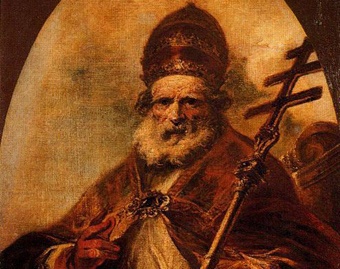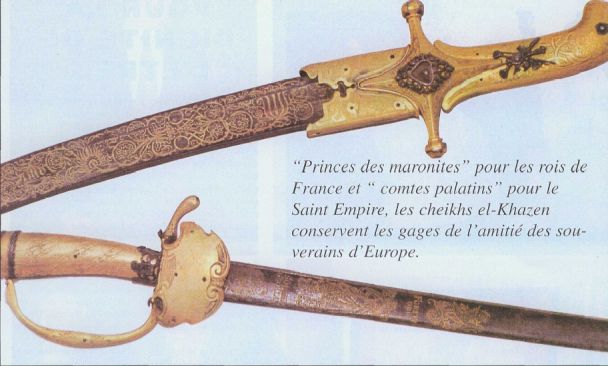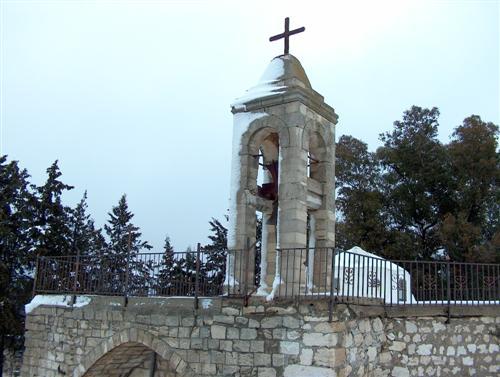
Denver, Colo., Nov 4, 2012 / 07:02 am (CNA/EWTN News).- Nov. 10 is the Roman Catholic Church’s liturgical memorial of the fifth-century Pope Saint Leo I, known as “St. Leo the Great,” whose involvement in the fourth ecumenical council helped prevent the spread of error on Christ's divine and human natures.
St. Leo intervened for the safety of the Church in the West as well, persuading Attila the Hun to turn back from Rome.
Eastern Catholics and Eastern Orthodox Christians also maintain a devotion to the memory of Pope St. Leo the Great. Churches of the Byzantine tradition celebrate his feast day on Feb. 18.
“As the nickname soon attributed to him by tradition suggests,” Pope Benedict XVI said in a 2008 general audience on the saint, “he was truly one of the greatest pontiffs to have honoured the Roman See and made a very important contribution to strengthening its authority and prestige.”
Leo’s origins are obscure and his date of birth unknown. His ancestors are said to have come from Tuscany, though the future pope may have been born in that region or in Rome itself. He became a deacon in Rome in approximately 430, during the pontificate of Pope Celestine I.
During this time, central authority was beginning to decline in the Western portion of the Roman Empire. At some point between 432 and 440, during the reign of Pope St. Celestine’s successor Pope Sixtus III, the Roman Emperor Valentinian III commissioned Leo to travel to the region of Gaul and settle a dispute between military and civil officials.
Pope Sixtus III died in 440 and, like his predecessor Celestine, was canonized as a saint. Leo, away on his diplomatic mission at the time of the Pope’s death, was chosen to be the next Bishop of Rome. Reigning for over two decades, he sought to preserve the unity of the Church in its profession of faith, and to ensure the safety of his people against frequent barbarian invasions.
Achrafieh 2020 invited all Lebanese and residents to DISCOVER Rmeil (Rmeil/Geitawi) on foot, on bicycle, or on roller/skateboard on November 4, …
Bishop Tawadros was chosen as new Pope of Egypt’s Coptic Christians Sunday when a blindfolded altar boy picked his name from …
French President Francois Hollande warned on Sunday that Paris would prevent any attempt to undermine Lebanon’s stability, advising political forces to …
Khazen History


Historical Feature:
Churches and Monasteries of the Khazen family

St. Anthony of Padua Church in Ballouneh
Mar Abda Church in Bakaatit Kanaan
Saint Michael Church in Bkaatouta
Saint Therese Church in Qolayaat
Saint Simeon Stylites (مار سمعان العامودي) Church In Ajaltoun
Virgin Mary Church (سيدة المعونات) in Sheilé
Assumption of Mary Church in Ballouneh
1 - The sword of the Maronite Prince
2 - LES KHAZEN CONSULS DE FRANCE
3 - LES MARONITES & LES KHAZEN
4 - LES MAAN & LES KHAZEN
5 - ORIGINE DE LA FAMILLE
Population Movements to Keserwan - The Khazens and The Maans
ما جاء عن الثورة في المقاطعة الكسروانية
ثورة أهالي كسروان على المشايخ الخوازنة وأسبابها
Origins of the "Prince of Maronite" Title
Growing diversity: the Khazin sheiks and the clergy in the first decades of the 18th century
Historical Members:
Barbar Beik El Khazen [English]
Patriach Toubia Kaiss El Khazen(Biography & Life Part1 Part2) (Arabic)
Patriach Youssef Dargham El Khazen (Cont'd)
Cheikh Bishara Jafal El Khazen
Patriarch Youssef Raji El Khazen
The Martyrs Cheikh Philippe & Cheikh Farid El Khazen
Cheikh Nawfal El Khazen (Consul De France)
Cheikh Hossun El Khazen (Consul De France)
Cheikh Abou-Nawfal El Khazen (Consul De France)
Cheikh Francis Abee Nader & his son Yousef
Cheikh Abou-Kanso El Khazen (Consul De France)
Cheikh Abou Nader El Khazen
Cheikh Chafic El Khazen
Cheikh Keserwan El Khazen
Cheikh Serhal El Khazen [English]
Cheikh Rafiq El Khazen [English]
Cheikh Hanna El Khazen
Cheikha Arzi El Khazen
Marie El Khazen